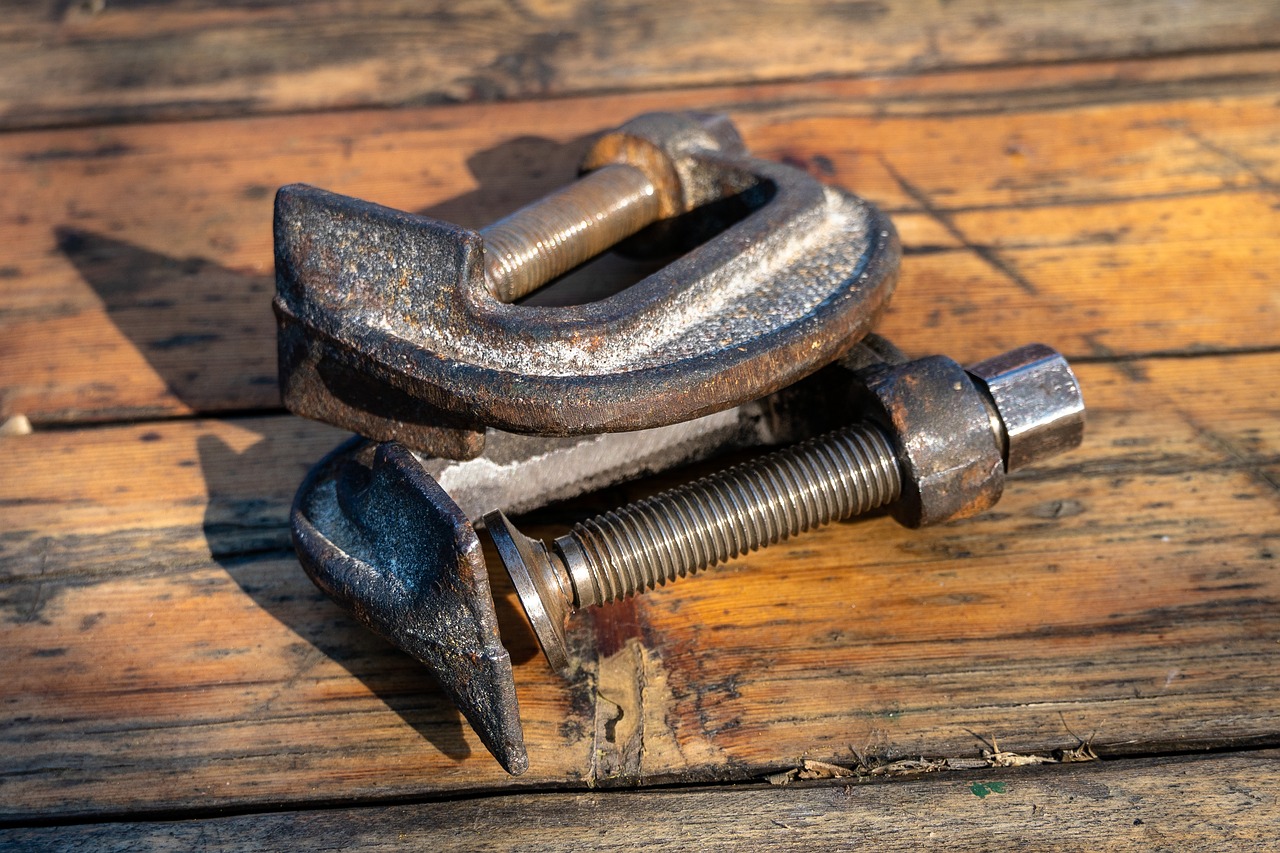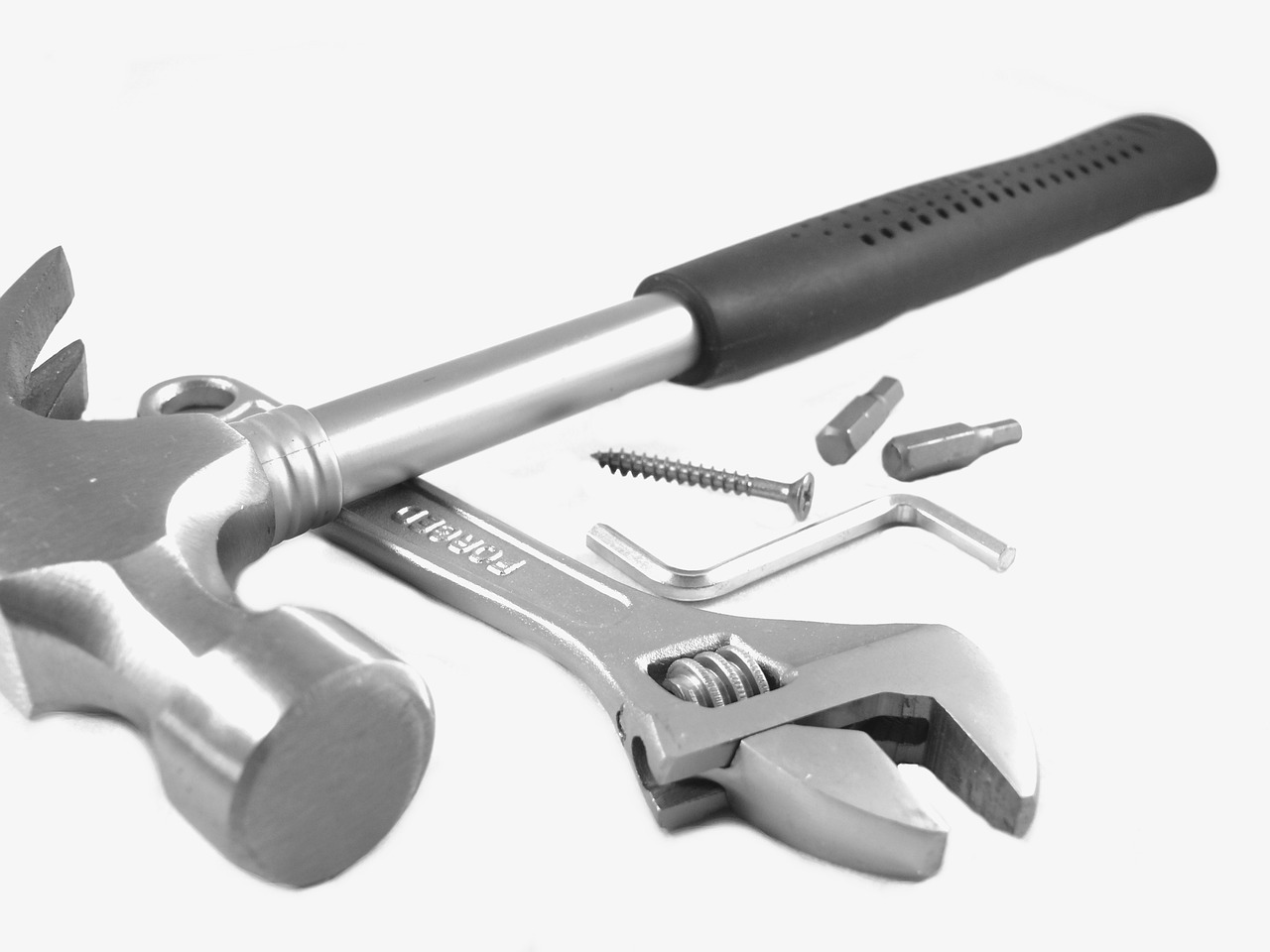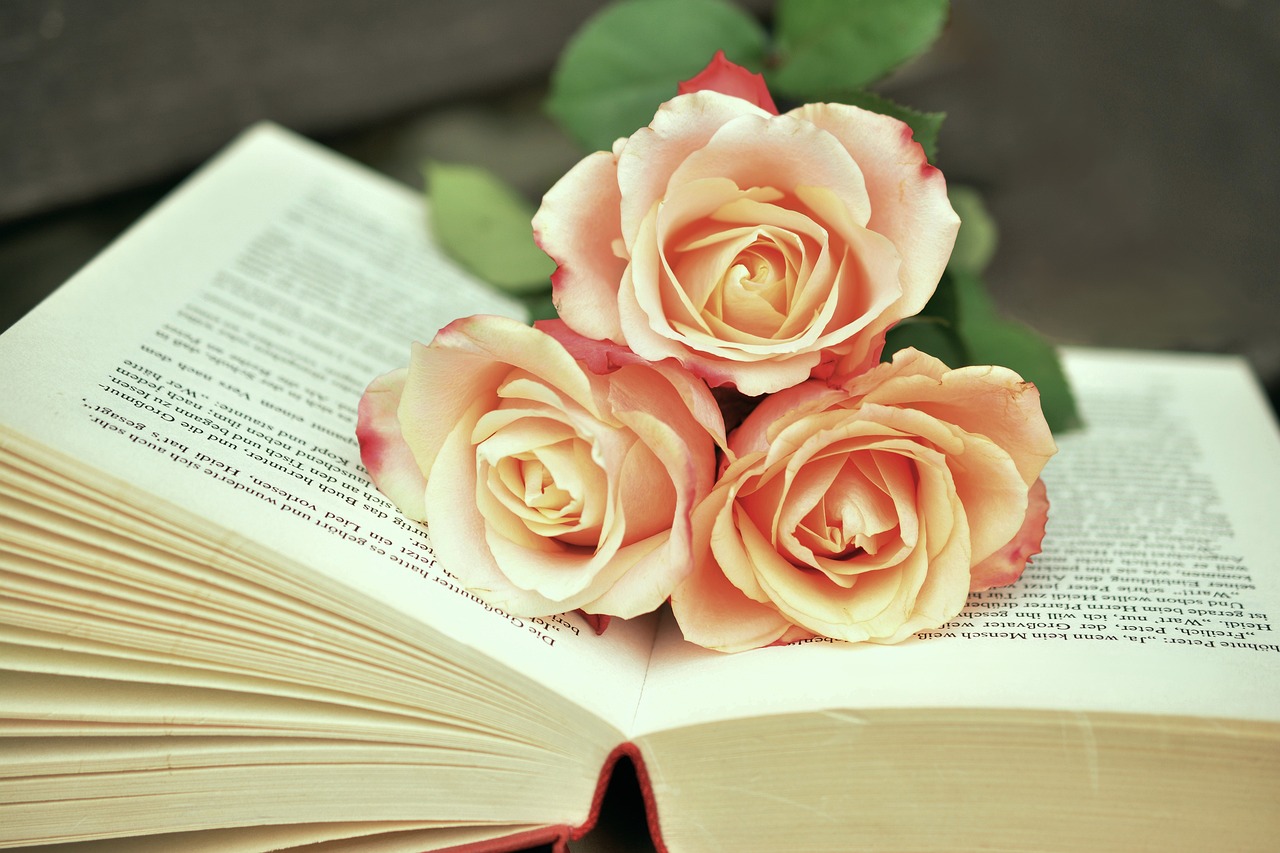How to Take Your Sketching Skills to the Next Level
Are you ready to elevate your sketching game? Whether you’re a complete novice or someone who's been doodling for years, there’s always room for growth in your artistic journey. Sketching is not just about putting pencil to paper; it’s an exploration of your imagination, a way to communicate your thoughts visually, and a delightful form of self-expression. In this article, we’ll delve into various techniques, tools, and tips that will not only enhance your sketching abilities but also help you develop a unique style that sets you apart from the crowd.
Imagine stepping into a world where your sketches come alive, where every stroke tells a story, and where your creativity knows no bounds. This journey begins with understanding the fundamentals of sketching. It's essential to grasp the basic concepts, such as line quality, shading, and perspective, as these elements serve as the backbone of more complex techniques. Think of these basics as the roots of a tree; without them, your artistic skills may struggle to grow and flourish.
As we embark on this artistic adventure, we’ll also explore the tools that can dramatically impact your sketching experience. Choosing the right tools is akin to a chef selecting the finest ingredients for a gourmet meal. From the pencils you use to the paper you draw on, each choice can enhance your creativity and the overall outcome of your sketches. So, let’s dive deeper into the world of sketching tools and techniques, and uncover the secrets to taking your skills to the next level!
Before we rush into advanced techniques, let’s take a moment to appreciate the foundational elements of sketching. Understanding line quality is crucial; it’s the difference between a flat, lifeless drawing and one that seems to jump off the page. A confident, bold line can convey strength, while a delicate, light line might express fragility. Shading, on the other hand, adds depth and dimension, transforming a simple outline into a three-dimensional form. And then there’s perspective, which can create an illusion of space and distance, making your sketches feel more dynamic and engaging.
The tools you select can significantly influence your sketching experience. Think of them as your artistic arsenal. Here are some key components to consider:
- Pencils: Different types of pencils offer varying levels of hardness and softness, affecting the texture and detail of your sketches.
- Paper: The right paper can enhance your sketches, providing a suitable surface for the medium you choose.
- Accessories: Items like erasers, sharpeners, and blending stumps can also play a vital role in your sketching toolkit.
When it comes to pencils, the choices can be overwhelming. Graphite and charcoal are two popular mediums, each with its own unique properties. Graphite pencils range from hard (H) to soft (B), allowing you to create fine lines or bold strokes. On the other hand, charcoal offers a rich, deep black that can create dramatic contrasts. Understanding these differences can help you select the right pencil for your specific needs, whether you’re aiming for delicate details or bold statements.
Graphite is great for precision and detail, making it ideal for realistic sketches. Charcoal, however, is perfect for expressive, loose drawings. It allows for a wide range of tones and can be easily smudged to create soft shadows. The choice between these mediums ultimately depends on your personal style and the effect you want to achieve.
Choosing the right paper is just as important as selecting the right pencil. Different types of sketching paper offer varying textures and weights, which can influence the final outcome of your work. For instance, smoother papers are excellent for fine detail, while textured papers can add an interesting depth to your sketches. Experimenting with various papers can help you discover what works best for your style.
Now that you have a grasp on the basics and the tools, let’s look at some essential sketching techniques. Mastering techniques like hatching, cross-hatching, and stippling can add depth and dimension to your drawings. Hatching involves drawing parallel lines to create shading, while cross-hatching uses intersecting lines for a more complex texture. Stippling, on the other hand, employs dots to create light and shadow. Each technique can evoke different emotions and atmospheres in your sketches, so don’t hesitate to experiment!
Finding your artistic voice is vital for personal growth as an artist. It’s like discovering a secret ingredient that makes your dishes uniquely yours. To develop your style, try experimenting with different techniques and mediums. Don’t be afraid to step outside your comfort zone; sometimes, the most unexpected combinations yield the most remarkable results. Gather inspiration from various sources—nature, art, and even everyday life can spark creativity and fuel your artistic journey.
Drawing inspiration from the world around you can help you develop your style. Take a walk in nature, visit galleries, or simply observe the people and objects around you. Each experience can provide fresh ideas and perspectives, enriching your sketches and pushing your creativity to new heights. Keep a sketchbook handy to jot down ideas or quick sketches whenever inspiration strikes!
Consistency is key when it comes to improving your sketching skills. Just like any other skill, the more you practice, the better you become. Set aside time each day or week to sketch, even if it’s just for a few minutes. Incorporating sketching into your daily routine can help solidify your skills and encourage growth. Remember, every stroke counts, and each sketch brings you one step closer to mastering your craft!
Q: How often should I practice sketching?
A: Aim to sketch regularly, even if it's just for a few minutes each day. Consistency is key to improvement!
Q: What type of paper is best for beginners?
A: Start with a medium-weight sketching paper that has a slight texture. This will help you experiment with different techniques.
Q: Can I use colored pencils for sketching?
A: Absolutely! Colored pencils can add a vibrant touch to your sketches and help you express your creativity in new ways.
Q: How do I find my unique style?
A: Experiment with different techniques and mediums, and draw inspiration from various sources. Over time, your unique style will naturally emerge.

Understanding the Basics of Sketching
Before you can truly elevate your sketching skills, it's crucial to understand the fundamentals that form the backbone of this art form. Think of sketching as building a house; without a solid foundation, your masterpiece could crumble. The key elements to grasp include line quality, shading, and perspective. Each of these components plays a vital role in creating sketches that are not only visually appealing but also convey depth and emotion.
Line quality refers to the characteristics of the lines you draw. Are they thick and bold, or thin and delicate? The way you manipulate your lines can express different feelings and add a unique flair to your work. For instance, a sketch with jagged, erratic lines might evoke tension or chaos, while smooth, flowing lines might suggest calmness and tranquility. Experimenting with different line qualities will help you discover how they can alter the mood of your sketches.
Next up is shading, which is essential for adding dimension and realism to your drawings. Think of shading as the magic wand that transforms a flat image into a three-dimensional object. By varying the pressure on your pencil and using techniques like hatching and cross-hatching, you can create a range of tones that bring your sketches to life. It's like painting with light and shadow—understanding how they interact will elevate your work to new heights.
Finally, let’s talk about perspective. This concept can be a bit tricky, but mastering it is key to creating believable and engaging compositions. Perspective is the way objects appear smaller as they get further away from the viewer. To practice, try sketching a simple scene, like a street or a room, and pay attention to how the sizes of objects change based on their distance. A basic understanding of one-point and two-point perspective can dramatically improve your sketches, making them more dynamic and interesting.
In summary, the basics of sketching—line quality, shading, and perspective—are your tools for creating compelling art. By focusing on these elements, you will build a strong foundation that will support your artistic journey. Remember, every artist starts somewhere, and mastering these basics is the first step in developing your unique style.
- What materials do I need to start sketching? You can start with just a pencil and paper. As you progress, consider investing in different types of pencils and sketching paper.
- How often should I practice sketching? Consistency is key! Aim for at least a few minutes of sketching each day to see improvement.
- Can I sketch from photographs? Absolutely! Sketching from photos can help you practice and understand different techniques.

Choosing the Right Tools
When it comes to sketching, the tools you choose can make a world of difference in your artistic journey. Imagine trying to paint a masterpiece with a brush that’s too stiff or a canvas that doesn’t hold paint well; it’s frustrating, right? Similarly, selecting the right sketching tools can elevate your work from basic doodles to stunning illustrations that capture your unique vision. So, let’s dive into the essential tools that every aspiring artist should consider.
First off, let’s talk about pencils. Not all pencils are created equal! They come in various types, each with its own unique characteristics. For instance, the hardness and softness of a pencil greatly affect the line quality and shading in your sketches. A softer pencil (like a 6B) will give you rich, dark lines and smooth shading, while a harder pencil (like a 2H) creates lighter, finer lines that are perfect for detailed work. Here’s a quick breakdown:
| Pencil Type | Hardness | Best For |
|---|---|---|
| 2H | Hard | Fine lines, detailed work |
| HB | Medium | General sketching |
| 6B | Soft | Shading, bold lines |
Next, let’s explore the world of graphite vs. charcoal. Both mediums have their own flair and can be used to create stunning effects. Graphite is fantastic for detailed work and smooth gradients, while charcoal offers a more expressive and dramatic feel. If you’re looking to create deep shadows and rich textures, charcoal might be your go-to. But if precision is your game, stick with graphite. It’s like choosing between a fine-tipped pen and a broad brush; each serves its purpose depending on the effect you want to achieve.
Now, don’t overlook the importance of paper selection. The type of paper you use can drastically affect the final outcome of your sketches. For instance, a smooth paper is ideal for detailed graphite work, while a textured paper can enhance the richness of charcoal sketches. Here are some common types of sketching paper:
- Sketch Paper: Lightweight and perfect for practice.
- Drawing Paper: Heavier and ideal for finished pieces.
- Watercolor Paper: Great for mixed media and wet techniques.
Ultimately, choosing the right tools is about finding what feels comfortable and inspires you. Don’t hesitate to experiment with different pencils, papers, and accessories. You might find that a particular combination sparks your creativity in ways you never imagined! So, gather your tools, and let’s get sketching!

Types of Pencils
When it comes to sketching, the type of pencil you choose can make a world of difference in your artistic journey. Each pencil has its own unique characteristics that can influence the texture, depth, and overall look of your sketches. Understanding the differences in pencil types is essential for any artist looking to elevate their work. Generally, pencils are categorized based on their hardness or softness, which is denoted by a grading system. This system ranges from H (hard) to B (black or soft) and includes F (fine point) in between. Let's break it down:
| Pencil Type | Characteristics | Best For |
|---|---|---|
| H (Hard) | Produces lighter marks, less smudging | Fine lines, detailed sketches |
| HB (Medium) | Balanced hardness and softness | General sketching, writing |
| B (Black or Soft) | Creates darker, richer lines | Shading, expressive sketches |
Using a range of pencils can greatly enhance your sketching. For instance, starting with an H pencil can help you create precise outlines, while switching to a B pencil allows you to add depth and shading. This combination can give your work a more dynamic and engaging feel. It's like painting with different brushes; each one adds its own flavor to the canvas!
Moreover, you might want to explore different brands as well. Some artists swear by specific brands for their quality and consistency. For example, Faber-Castell and Staedtler are renowned for their superior graphite pencils, while Derwent offers a fantastic range of colored pencils. Experimenting with various brands can help you find the perfect fit for your style and technique.
In summary, the type of pencil you choose plays a crucial role in your sketching experience. By understanding the different types and experimenting with them, you can find the right tools that resonate with your artistic expression. So, grab a few pencils, try them out, and let your creativity flow!
- What pencil should I start with for sketching? It's best to start with an HB pencil, as it offers a good balance for both light and dark lines.
- Can I use colored pencils for sketching? Absolutely! Colored pencils can add a vibrant touch to your sketches and can be used for both outlines and shading.
- How often should I change my pencil? It depends on your usage, but generally, you'll want to sharpen your pencil when it starts to lose its point for optimal control.

Graphite vs. Charcoal
When it comes to sketching, choosing between graphite and charcoal can feel like picking between two equally delicious desserts—each has its unique flavor and texture that can drastically change your artistic experience. Both mediums have been cherished by artists for centuries, but they bring different qualities to the table. Graphite, with its smooth application and fine detail capabilities, is often the go-to choice for precision and clarity. Its versatility allows for a range of techniques from light sketches to deep, rich shading. On the other hand, charcoal is the wild child of the art world, known for its bold, expressive lines and dramatic contrasts. It can create deep blacks and soft grays, lending a sense of depth and emotion that graphite sometimes struggles to achieve.
Let’s break down some of the key differences that might help you decide which medium suits your style best:
| Aspect | Graphite | Charcoal |
|---|---|---|
| Texture | Smooth and fine | Rough and rich |
| Detail | High detail and precision | Less detail, more expressive |
| Shading | Gradual and controlled | Bold and dramatic |
| Ease of Use | Easy to erase and adjust | Harder to control, but rewarding |
Graphite is often preferred by beginners because it is forgiving; you can easily erase mistakes and adjust your work as you go. This can be crucial when you're still developing your skills and confidence. However, charcoal requires a bit more finesse and can be messier, but the payoff is immense. The way charcoal can glide across the paper and create soft transitions is an experience that every artist should try at least once. It's like dancing with your pencil—each stroke can feel fluid and alive.
Ultimately, the choice between graphite and charcoal boils down to your personal preference and the kind of sketches you want to create. Many artists find that using both mediums allows them to tap into the strengths of each, creating a dynamic range of artwork that showcases their versatility. So, why not experiment? Grab a sketchbook, some graphite, and a stick of charcoal, and let your creativity run wild!

Paper Selection
Choosing the right paper for your sketches is like selecting the perfect canvas for a masterpiece; it can make or break your artistic expression. The texture, weight, and finish of the paper can significantly influence how your sketches turn out. Different types of paper cater to various mediums and techniques, so understanding these options is crucial for any aspiring artist. For instance, if you're working with graphite pencils, you might prefer a smooth paper that allows for fine details, while charcoal might require a more textured surface to hold the medium effectively.
When it comes to sketching paper, there are a few key types you should be aware of:
- Sketch Paper: This is typically lightweight and has a fine texture, making it ideal for quick sketches and practice. It's often inexpensive, allowing you to experiment without worrying about the cost.
- Drawing Paper: Heavier than sketch paper, this type is designed for more detailed work. It can handle various mediums, including ink and markers, providing a versatile option for serious artists.
- Watercolor Paper: If you plan to incorporate watercolors into your sketches, using watercolor paper is essential. It has a thicker, more absorbent surface that can withstand wet mediums without warping.
- Toothy Paper: This type of paper has a pronounced texture, making it perfect for charcoal and pastels. The texture helps grip the medium, allowing for richer and more expressive strokes.
Another factor to consider is the weight of the paper, which is measured in grams per square meter (gsm). Heavier papers (around 200 gsm or more) are typically more durable and can handle multiple layers of medium without tearing or warping. Conversely, lighter papers (around 90-120 gsm) are better for quick sketches but may not be suitable for detailed work or wet mediums.
Ultimately, the choice of paper should align with your personal style and the techniques you wish to explore. Experimenting with different types can lead to surprising results and help you discover what works best for you. So, don't hesitate to try out various options to find that perfect match for your sketching adventures!
Q: What type of paper is best for beginners?
A: For beginners, sketch paper is often the best choice as it is affordable and suitable for practice. It allows for freedom of expression without the fear of wasting expensive materials.
Q: Can I use watercolor paper for pencil sketches?
A: Yes, you can use watercolor paper for pencil sketches, but keep in mind that its texture may affect the smoothness of your pencil strokes.
Q: How do I know the right weight of paper for my sketches?
A: The right weight depends on the medium you plan to use. For dry mediums like graphite and charcoal, lighter papers can work, but for wet mediums, opt for heavier papers to avoid warping.

Essential Sketching Techniques
When it comes to sketching, mastering essential techniques can make a world of difference in how your art comes to life on paper. Think of these techniques as the building blocks of your artistic expression. They allow you to add depth, texture, and character to your sketches, transforming simple lines into captivating visuals. Let's dive into some fundamental techniques that every aspiring artist should explore.
One of the most basic yet powerful techniques is hatching. This involves drawing closely spaced parallel lines to create shading and texture. The direction and density of the lines can dramatically affect the light and shadow in your sketches. For instance, if you want to depict a rounded object, you might use curved hatching lines to follow the form of the object, giving it a three-dimensional appearance.
Cross-hatching takes hatching to the next level. By layering sets of parallel lines in different directions, you can create richer textures and deeper shadows. This technique can be particularly effective when you want to emphasize certain areas of your sketch or create a sense of volume. The more layers you add, the more complex and dynamic your shading becomes. Imagine cross-hatching as a dance between light and dark, where each stroke contributes to the overall composition.
Another technique worth mastering is stippling, which involves using small dots to create shading and texture. This technique may require more patience than hatching or cross-hatching, but the results can be stunning. Stippling allows for a unique aesthetic that can convey a sense of softness or detail in your sketches. For example, when sketching a portrait, using stippling can help you achieve a delicate gradation of tones on the skin, adding realism and depth.
To help you visualize these techniques, here’s a simple table that summarizes their characteristics:
| Technique | Description | Best Used For |
|---|---|---|
| Hatching | Drawing parallel lines to create shading. | Basic shading and texture. |
| Cross-hatching | Layering lines in different directions. | Complex shadows and volume. |
| Stippling | Using dots to create shading. | Soft textures and detailed gradients. |
As you practice these techniques, don’t be afraid to experiment. Combine them in various ways to see how they interact. Maybe you’ll find that a little stippling enhances the hatching in your sketches, or that cross-hatching adds depth to a stippled area. The key is to play around and discover what works best for you. Remember, every artist develops their own style over time, and these techniques are merely tools to help you express your unique vision.
Incorporating these essential sketching techniques into your practice can elevate your work significantly. They not only provide a solid foundation for creating lifelike images but also encourage you to explore your creativity. So grab your pencils, find a comfortable spot, and start sketching! The more you practice, the more you'll discover the incredible potential of your artistic abilities.
- What is the best technique for beginners? Hatching is often recommended for beginners as it is straightforward and helps in understanding light and shadow.
- Can I combine different techniques? Absolutely! Experimenting with combinations of hatching, cross-hatching, and stippling can lead to unique styles.
- How often should I practice sketching? Regular practice is key. Aim for at least a little sketching every day to build your skills over time.

Developing Your Unique Style
Finding your artistic voice is not just a journey; it's an adventure filled with twists, turns, and delightful surprises. Just like a chef experimenting with flavors, you need to mix and match different techniques, mediums, and inspirations to discover what truly resonates with you. But how do you embark on this creative quest? Well, the first step is to embrace experimentation. Don’t be afraid to step outside your comfort zone! Try sketching in various styles, from realism to abstract. Each attempt will teach you something new, and you might just stumble upon a style that feels like home.
Incorporating inspiration from various sources can also play a significant role in developing your unique style. Nature, art history, and even everyday life can spark ideas that fuel your creativity. For instance, take a walk in the park and observe the way light dances on leaves or how shadows create depth on the ground. These moments can inspire you to capture similar effects in your sketches. You might find that a particular color palette or technique resonates with you, leading to a signature style that is unmistakably yours.
Another crucial aspect of finding your artistic identity is practicing regularly. Just like a musician perfects their craft through consistent practice, artists must also dedicate time to sketching. Set aside time each day or week to draw, even if it’s just for a few minutes. Over time, you’ll notice significant improvements in your skills and confidence. Consider keeping a sketchbook handy to jot down ideas, doodles, or even quick studies. This not only helps you practice but also allows you to look back and see how far you’ve come.
As you develop your style, it’s also essential to reflect on your progress. Take time to review your previous sketches and identify common themes or techniques that you gravitate towards. This self-reflection can provide valuable insights into your artistic preferences and help you refine your style further. Don’t be afraid to seek feedback from fellow artists or friends; sometimes, an outside perspective can shed light on aspects you might not have noticed.
Lastly, remember that developing a unique style is a continuous process. Just as a river flows and changes its course, your artistic journey will evolve over time. Stay open to new ideas, techniques, and inspirations, and allow your style to grow with you. Embrace the surprises along the way, and you’ll find that your sketches not only reflect your skills but also your unique perspective on the world.
- How long does it take to develop a unique style? The timeline varies for everyone. Some may find their style quickly, while others may take years. The key is to keep experimenting and practicing.
- Can I change my style once I find it? Absolutely! Your style can evolve as you grow as an artist. Embrace changes and let your creativity flow.
- What if I feel stuck in my artistic journey? It’s normal to hit a creative block. Try stepping away for a bit, seeking inspiration from different sources, or collaborating with other artists.

Incorporating Inspiration
When it comes to sketching, inspiration can be your best friend, but it can also be elusive. Have you ever sat down with your sketchbook, pencil in hand, only to find your mind blank? It's a common struggle, but fear not! There are countless ways to ignite that creative spark and transform your surroundings into a wellspring of ideas. One of the best ways to cultivate inspiration is to look at the world around you. Nature, for instance, is a treasure trove of shapes, colors, and textures just waiting to be captured on paper. Whether it's the intricate patterns of leaves or the fluid lines of a flowing river, nature can provide endless subjects to sketch.
Moreover, don’t underestimate the power of art itself. Visiting galleries or museums can expose you to various styles and techniques that may resonate with you. Take note of what catches your eye—whether it’s a specific color palette, a unique approach to composition, or even the emotion conveyed in a piece. This can help you refine your own artistic voice. You might even consider keeping an inspiration journal where you jot down ideas, thoughts, or even snippets of conversations that spark your imagination. This journal can serve as a personal reservoir of creativity to draw from when you’re feeling uninspired.
Additionally, everyday life is full of inspiration if you know where to look. The hustle and bustle of a city, the quiet of a park, or the warmth of a café can all provide rich material for your sketches. Try to carry a small sketchbook with you wherever you go. When you see something that piques your interest, take a moment to sketch it out. It doesn’t have to be perfect; the goal is to capture the essence of what you see. Remember, inspiration often strikes when you least expect it, so being prepared can make all the difference.
To further enhance your creative process, consider the following tips:
- Engage with Other Artists: Join local art groups or online communities. Sharing your work and receiving feedback can open your eyes to new perspectives.
- Experiment with Different Mediums: Sometimes, switching from graphite to charcoal or even trying watercolors can unlock new ideas and techniques.
- Set Challenges for Yourself: Create prompts or themes for your sketches, such as "draw something that makes you happy" or "sketch your favorite spot in town."
Incorporating inspiration into your sketching routine is not just about finding new subjects; it’s about fostering a mindset that embraces creativity. By actively seeking out inspiration in various forms and being open to new experiences, you can transform your sketching practice into a vibrant exploration of your artistic capabilities. So, the next time you feel stuck, remember that inspiration is all around you—waiting to be discovered!
Q: How can I find inspiration when I feel stuck?
A: Try stepping outside and observing your surroundings, visiting art galleries, or even flipping through your favorite art books. Keeping a journal of ideas can also help.
Q: Is it okay to draw from photographs or other artists' work?
A: Absolutely! Drawing from photographs can be a great way to practice, but always remember to credit the original artist if you share your work.
Q: How often should I sketch to improve my skills?
A: Consistency is key. Aim to sketch daily, even if it's just for a few minutes. Regular practice will help you develop your style and improve your technique.

Practicing Regularly
When it comes to enhancing your sketching skills, consistency is your best friend. Just like learning a new language or mastering a musical instrument, the more you practice, the better you become. Imagine trying to play a song on the guitar without ever picking it up—it's just not going to happen! Similarly, by incorporating sketching into your daily routine, you can see noticeable improvements over time.
But how do you make sketching a regular part of your life? First, consider setting aside a specific time each day dedicated to sketching. Whether it’s just 10 minutes during your morning coffee or an hour in the evening, having a designated time can help you stay committed. You might be surprised at how quickly you can fill up a sketchbook with a little daily effort!
Another effective strategy is to create a sketching challenge. This could be as simple as drawing one object each day or completing a themed series over a week. For instance, you could focus on:
- Nature: Sketch a different plant or animal each day.
- People: Practice drawing faces or figures from photographs or real life.
- Everyday Objects: Challenge yourself to draw items around your home.
Additionally, keeping a sketchbook on hand at all times can turn unexpected moments into creative opportunities. Whether you’re waiting in line, on a break at work, or commuting, those little snippets of time can be transformed into productive sketching sessions. The key is to seize those moments and let your creativity flow.
Moreover, it’s essential to track your progress. Consider maintaining a sketch journal where you can reflect on your daily sketches. This journal can serve multiple purposes: it allows you to see how far you’ve come, helps identify areas for improvement, and can even spark new ideas for future sketches. You might even want to dedicate a page to your favorite sketches and note what you learned from each piece.
In conclusion, practicing regularly is about more than just putting pencil to paper; it’s about creating a habit that fuels your artistic journey. By making sketching a part of your daily routine, setting challenges, and tracking your progress, you'll not only improve your skills but also deepen your love for the art of sketching.
Q: How often should I practice sketching?
A: Aim for at least 10-30 minutes daily. Consistency is more important than duration.
Q: What if I don’t have time to sketch every day?
A: Try to fit in short sessions whenever possible, such as during breaks or while waiting for an appointment.
Q: Should I focus on one technique at a time?
A: It can be beneficial to concentrate on specific techniques, but feel free to mix things up to keep it interesting!
Q: How can I stay motivated to sketch regularly?
A: Set personal goals, join a sketching group, or participate in online challenges to stay inspired.
Frequently Asked Questions
- What are the basic techniques I should know for sketching?
Before diving into advanced techniques, it's essential to master the basics such as line quality, shading, and perspective. These foundational skills will serve as the bedrock for more complex sketching methods, enabling you to create more dynamic and lifelike drawings.
- How do I choose the right tools for sketching?
Selecting the right tools can dramatically enhance your sketching experience. Consider experimenting with various types of pencils, papers, and accessories. Graphite and charcoal each have their unique properties and can create different effects in your sketches, so it's worth trying both to see which suits your style best.
- What types of pencils should I use?
Pencils come in various hardness levels, which affect the texture and detail of your sketches. Softer pencils (like 2B or 4B) produce darker lines and are great for shading, while harder pencils (like H or 2H) create lighter, finer lines. Understanding these differences will help you select the perfect pencil for your artistic needs.
- How important is paper selection in sketching?
The type of paper you use can significantly impact your sketches. Different papers have varying textures and weights, which influence how your medium interacts with the surface. Experimenting with different types of sketching paper can help you find the best match for your preferred techniques.
- What are some essential sketching techniques I should practice?
Techniques like hatching, cross-hatching, and stippling are vital for adding depth and dimension to your sketches. Regular practice of these methods will enhance your ability to convey light, shadow, and texture, making your artwork more engaging and realistic.
- How can I develop my unique sketching style?
Finding your artistic voice is essential for personal growth as an artist. Experiment with different styles and techniques, and don't hesitate to draw inspiration from various sources such as nature, art, and everyday life. This exploration will help you discover what resonates with you and ultimately shape your unique style.
- Is regular practice really necessary for improvement?
Absolutely! Consistency is key when it comes to developing your skills. Incorporating sketching into your daily routine, even if it's just for a few minutes, will lead to significant improvement over time. Think of it like exercising; the more you do it, the stronger you'll become!



















